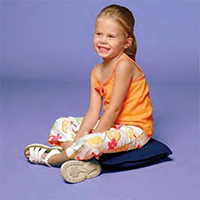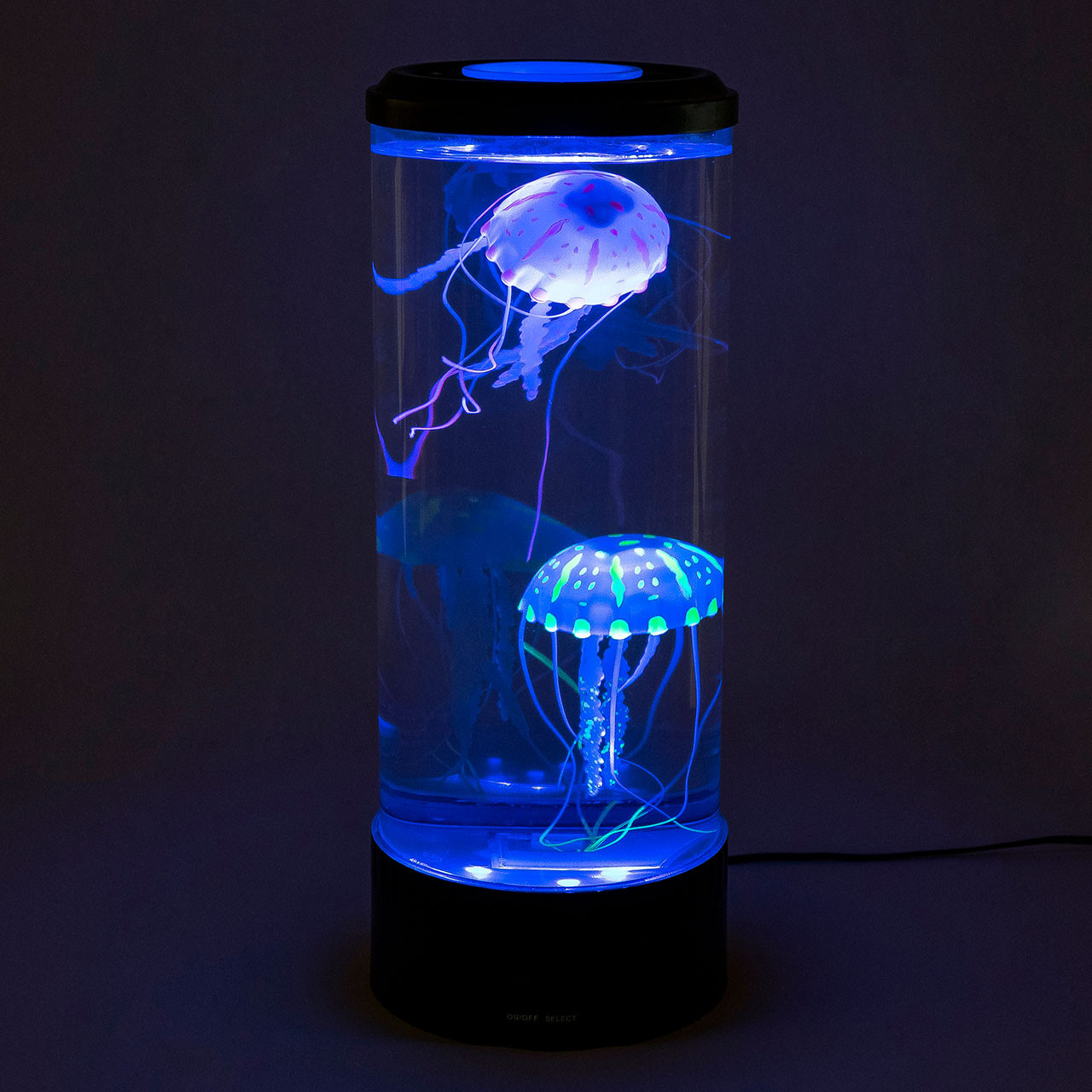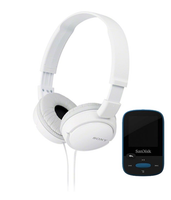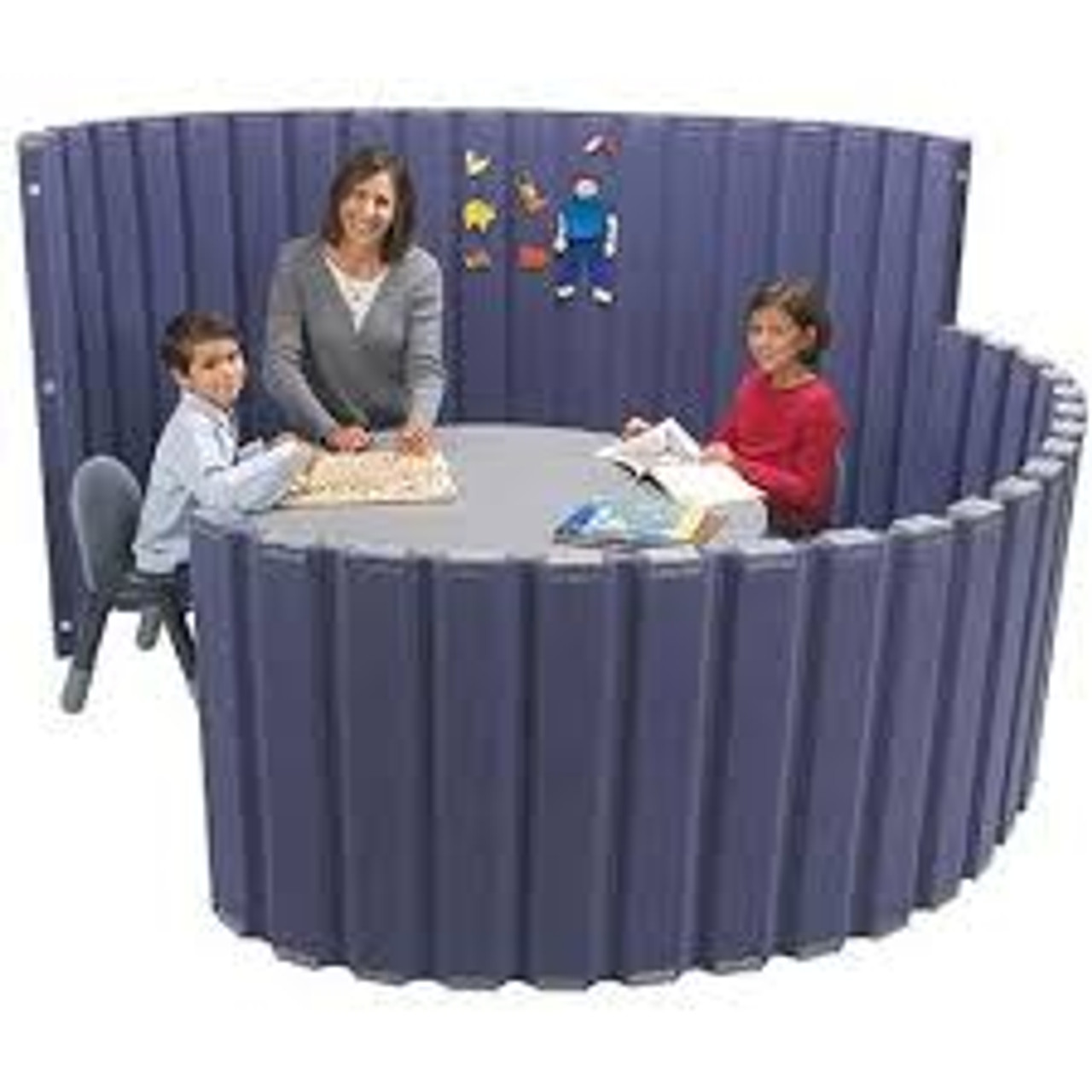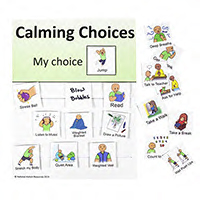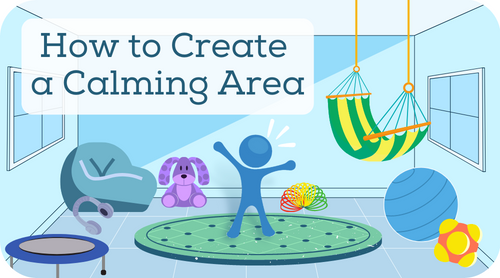
Creating a calming area in your home or classroom is a common strategy to help individuals on the autism spectrum manage over-stimulation and stress. In a crisis situation, a comforting place to calm down can keep students and staff safe. Below are some guidelines to help you create a safe and effective calming area.
Practice going to the area before a crisis situation.
When an individual is highly emotional, their ability to problem solve and make good decisions is drastically reduced. This can happen to anyone that is why we all learn to call 911 before an emergency happens, so that when a crisis comes, we know what to do.
Just like learning 911, it is important to create a calming plan and practice it frequently so that it becomes a familiar routine for the person. You can use a simple social story to explain the importance of calming down. We’ve created a Calm Down comic that you can use.
You can designate a room or quiet corner of a room as a safe spot. Some teachers have used a sound sponge divider to help block off an area of the room. This divider is nice because it is soft and works to dampen noise.
Make sure the calming area is a positive experience.
The goal of your calming area is to provide a safe place for an individual to regroup so that they can make good decisions. This is a positive life strategy, that should be encouraged. Turning your calming area into a “time out zone” or creating negative associations with it will not encourage your students to use it when they need to. The calming area should always be viewed as a safe area.
Common Items for a Calming Area:
-
Crash pad and weighted blanket or weighted stuffed animal- this combination provides deep pressure almost like a cocoon.
-
Visual prompts - like a calming choice chart, some mindfulness posters, or deep breathing exercises.
-
A variety of fidgets or soft toys.
-
A pressure activated massage pillow. This provides soothing vibration and also encourages isometric exercises that can further help self calming.
-
Relaxing music or noise reduction headphones.
-
You can also have a calming visual item like a ooze tube, jellyfish lamp, or sand panel to look at. If you decide to do this make sure there is enough room between the lamp and your crash pad. For example, the lamp can be on a counter near a crash pad, but not on the floor next to it.
Ideas for creating a calming area when traveling.
If you are traveling or going to visit family, you can also create a calming area on the go. Here are a few ideas:
-
Provide soft pillows or stuffed animals to sit and snuggle with. Provide different textures to touch - this can be as simple as a regular pillowcase and a flannel pillowcase.
-
Make sure to bring familiar comforting items like a favorite pillow, blanket, or a couple of toys to leave in the safe area.
-
Provide some soft lighting if possible.
-
Make sure the area is quiet or provide some headphones or soft music.








